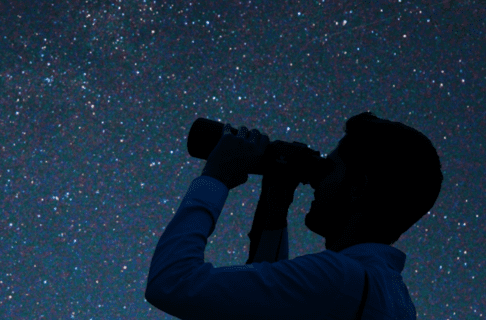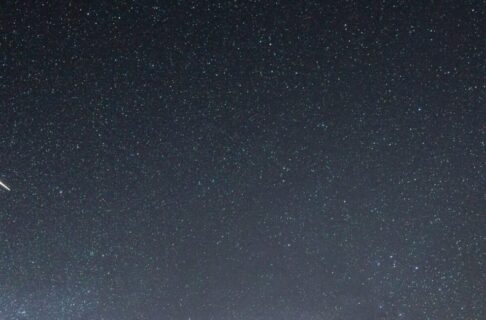Posted on: Tuesday July 31, 2018
by Claire Woodbury, Science Communicator
The highlight of August sky observing is the Perseid meteor shower. A meteor shower is a high occurrence of shooting stars over several days. Of course, “shooting stars” aren’t really stars at all, but dust-sized bits of rock or metal (meteoroids) that collide with the earth and burn up in our atmosphere. As they vaporize, they cause a brief streak of light in the sky (a meteor) which can be seen from the ground. Rarely, a larger version of a meteoroid survives its time as a meteor and makes it to the ground intact; we call these meteorites. Confused with the similar-sounding names? The long and short of it is that dust from space burn up in our atmosphere, making brilliant flashes of light that result in a spectacular cosmic show.
But where do these specks of dust come from and why do they sometimes come down all at once in a shower? The answer lies in the earth’s yearly path around the sun. The earth orbits the sun and acts as a cosmic broom to any smaller objects in its path. It just so happens that between mid July and mid August every year, Earth is travelling through the trail of dust left behind by a comet. Comets are balls of ice and dust that orbit the sun. Small chunks can break off as the comet travels through space. When we pass into the path left over from its travels, those chunks collide with the earth. The Perseids are caused from dust and debris left over from Comet Swift-Tuttle (109P).
How many meteors will I see?
It depends. The maximum number of meteors you could see depends on how dark your sky is, what time you observe, and how long you watch. It’s best to get away from city lights, since the fainter meteors are easy to miss when there are bright lights around. Although we are moving through the densest part of the dust trail on the evening of the 12th, meteor showers are always better after local midnight due to the orbital geometry. Your best bet will be between 11 pm and 4 am on the night of August 12-13, with rates increasing towards dawn. You might see upwards of 50 meteors an hour.
Don’t expect to see a constant stream of meteors; you might see one then nothing for twenty minutes then a whole bunch. Don’t give up if you haven’t seen any, best practice is to observe for at least an hour.
The best thing about meteor showers is that you don’t need any specials tools to see them! Just relax, grab a lawn chair or a blanket (and maybe some bug spray, let’s face it, this is Manitoba after all), lean back and look at the sky! Your ability to see the streaks of light can be hampered by clouds, high buildings, or light pollution. Even a particularly bright moon can obscure your view. Luckily for us, the moon will be very new on the evening of the 12, allowing for near perfect viewing conditions. August 12th between midnight and dawn (morning of the 13th) is the night you will see the most meteors but you can actually start to see the Perseids every night as early as July 17rd and as late as August 24th as we move in and out of Swift-Tuttle’s path. If you’re worried about missing the big show, you can start to practice by doing a little meteor gazing every night.




